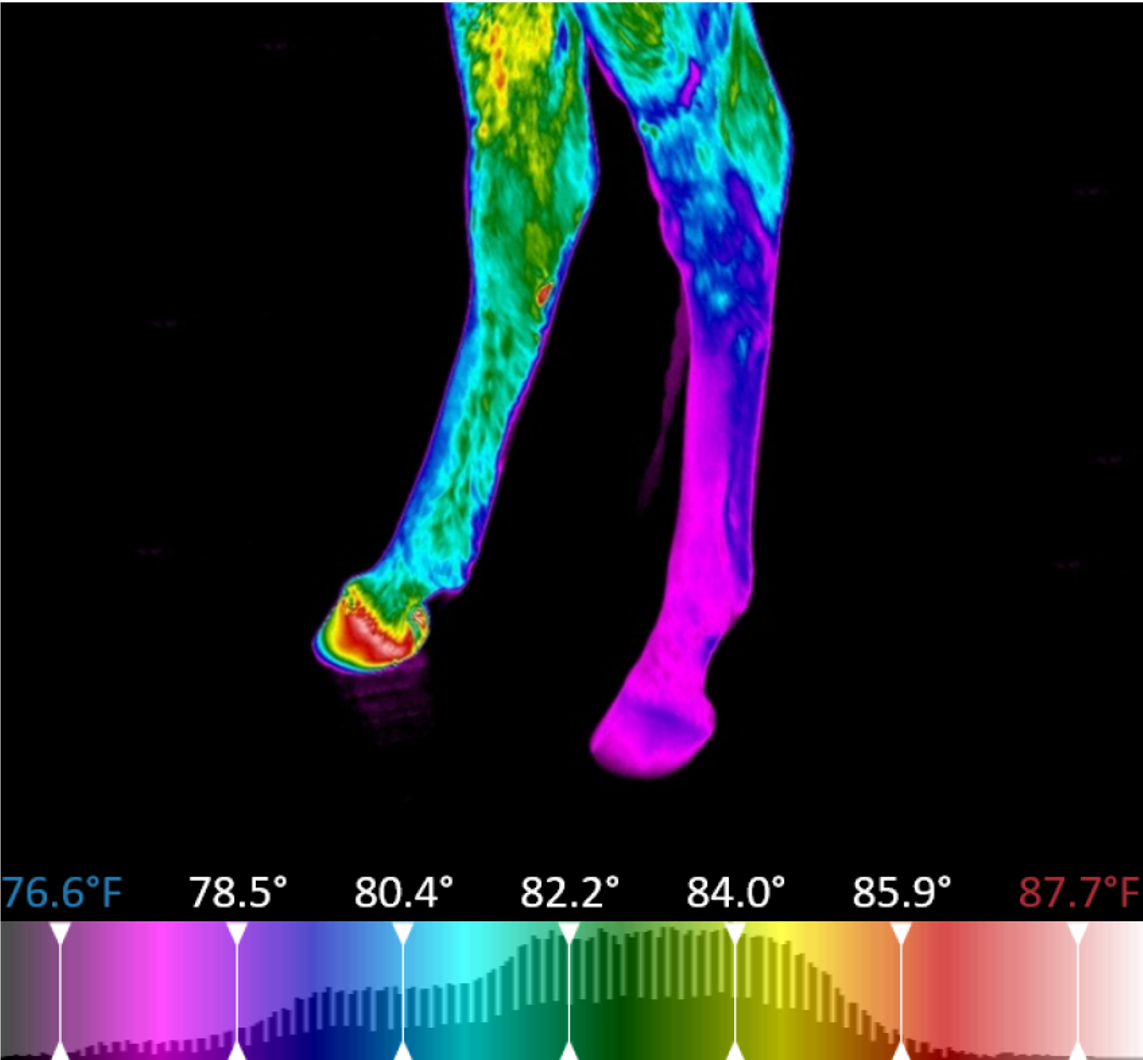Infrared Thermography Applied to Monitoring Musculoskeletal Adaptation to Training in Thoroughbred Race Horses
Abstract: Infrared thermography has been used to help in diagnosing lameness. It is hypothesized that, if used in a routine basis, it could help in understanding musculoskeletal modifications during race training. This study aimed to evaluate thermal variation in the musculoskeletal regions of young Thoroughbred (TB) horses during their initial months of race training.
Thermographic examinations were performed once every 2 weeks on 16 (10 male, 6 female) two-year-old TB racehorses, from arrival to the racetrack in June 2016, until January 2017, for a total of 16 evaluations. Thermographic imaging was performed using the appropriate protocol. Temperature (°C) was measured at the dorsal and palmar/plantar aspects of specific regions of interest (fetlock, metacarpal, metatarsal, carpal, tarsal, thoracolumbar, sacroiliac spine, and both hips).
Initially, we found a thermal balance and all regions demonstrated a positive correlation with one another. However, a significant difference was noted between the left and right sides as training progressed. Four horses were withdrawn from the study after 50% of evaluations because of metacarpal conditions associated with training. Thermographic examination revealed changes before the clinical manifestation of these conditions.
In conclusion, this study demonstrated that infrared thermography is an image technique that can facilitate understanding of musculoskeletal system modifications to race training and should be further investigated as a predictive tool to anticipate the occurrence of lesions.
Reference: Hanna C Prochno , Fernanda M Barussi , Fernanda Z Bastos, Saulo H Weber, Gervasio H Bechara , Ibrahim F Rehan, Pedro V Michelotto. (2020) J Equine Vet Sci. Apr;87:102935
|
Interested in learning more about thermal imaging? Request a demonstration with Digatherm and discover how veterinary thermography can help you find problem areas faster and easily monitor treatment progress. |

